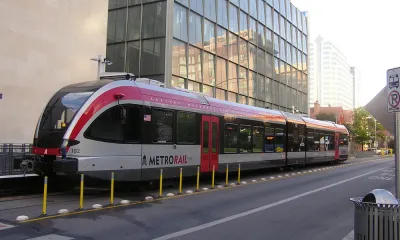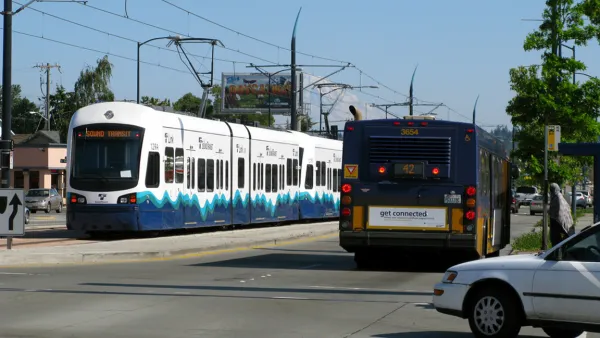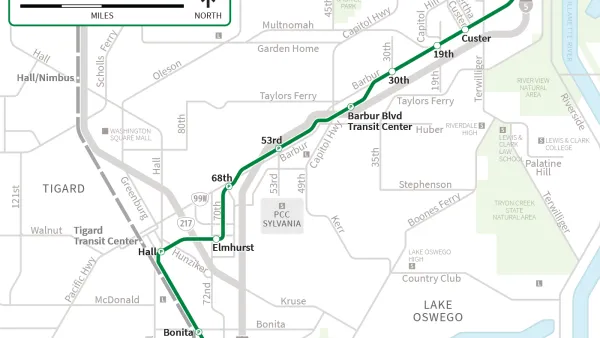There's a narrative to be built from the results of state and local elections on issues of public transit funding: voters continue to support more funding for public transit projects and programs.

Looking over the results of numerous votes on matters of transit and transportation funding from the November 3 election, the results show consistent support for new taxes and bonds to raise new money for mobility improvements.
The American Public Transportation Association has already tallied up the sum of the funding enabled by voters on November 3, coming up with the lofty figure of $38 billion. That figure increases the total from the November 2018 election, when voters approved $33 billion for transportation.
Kea Wilson takes a different angle in describing the accomplishment of transit and transportation at the ballot box: "A whopping 13 out of 17 major transit measures on state and local ballots across the U.S. yesterday passed, bringing the public transportation industry’s 2020 win rate at the ballot box to a stunning 92 percent."
Wilson also notes that the $38 billion in funding enabled by state and local voters outpaces the $11 billion spent by the Federal Transit Administration to public transit in the entire year of 2019.
Wilson lists the biggest wins for public transit. Including Project Connect in Austin, Measure RR to fund Caltrain in a three-county area of the San Francisco Bay Area, and Proposition 1 in Seattle.
One notable failure at the ballot box belongs to the "Get Moving" plan in Portland, Oregon, which Wilson notes was a broader transportation plan that included some funding for transit in addition to car-centric projects.
FULL STORY: State and Local Transit Won in a Landslide Yesterday

National Parks Layoffs Will Cause Communities to Lose Billions
Thousands of essential park workers were laid off this week, just before the busy spring break season.

Retro-silient?: America’s First “Eco-burb,” The Woodlands Turns 50
A master-planned community north of Houston offers lessons on green infrastructure and resilient design, but falls short of its founder’s lofty affordability and walkability goals.

Delivering for America Plan Will Downgrade Mail Service in at Least 49.5 Percent of Zip Codes
Republican and Democrat lawmakers criticize the plan for its disproportionate negative impact on rural communities.

Test News Post 1
This is a summary

Test News Headline 46
Test for the image on the front page.

Balancing Bombs and Butterflies: How the National Guard Protects a Rare Species
The National Guard at Fort Indiantown Gap uses GIS technology and land management strategies to balance military training with conservation efforts, ensuring the survival of the rare eastern regal fritillary butterfly.
Urban Design for Planners 1: Software Tools
This six-course series explores essential urban design concepts using open source software and equips planners with the tools they need to participate fully in the urban design process.
Planning for Universal Design
Learn the tools for implementing Universal Design in planning regulations.
EMC Planning Group, Inc.
Planetizen
Planetizen
Mpact (formerly Rail~Volution)
Great Falls Development Authority, Inc.
HUDs Office of Policy Development and Research
NYU Wagner Graduate School of Public Service





























